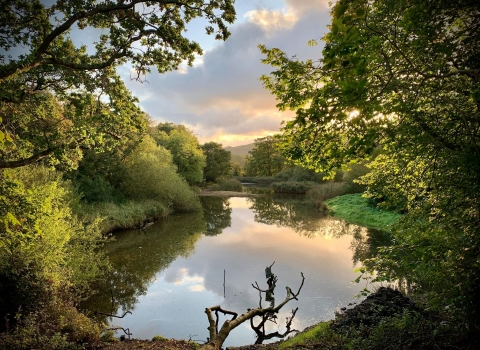
Nantporth Nature Reserve © NWWT Chris Wynne

Wood anemone © Bruce Shortland

Nuthatch © Jon Hawkins - Surrey Hills Photography
Nantporth Nature Reserve_Chris Wynne

Jay - Mark Hamblin 2020Vision
Nantporth Nature Reserve
Location
Know before you go
Dogs
When to visit
Opening times
Open at all timesBest time to visit
Spring/summer for birds and flowersAbout the reserve
Follow the Wales Coast Path under the airy canopy of this coastal ash woodland, which also contains rare whitebeam trees, oak, birch and aspen. In spring, the dappled sunlight illuminates the whites and yellows of wood anemones and primroses on the woodland floor, racing to flower before the trees fully awaken and cast them into shade. The varied canopy of the site creates the perfect habitat for an array of woodland birds; listen out for the melodic song of the blackcap and the high-pitched calls of the beautiful greyand-orange nuthatch. These typical woodland sounds are punctuated by the sharp ‘kleep’ cry of passing oystercatchers and the repetitive call of the redshank, as they make their way along the shores of the Menai Strait.
Natural woodland regeneration is the aim here. The Wildlife Trust undertake very limited coppicing to make the woodland as diverse as possible, leaving dead wood to benefit invertebrates.
Did you know?
Nantporth was once a limestone quarry. The Wales Coast Path follows the undulations of the former spoil heaps and the old workings can still be seen if you look carefully amongst the ferns and mosses.
Directions
If travelling by car use the northern entrance. Turn off the A5 at the edge of Upper Bangor onto Siliwen Road, before taking Evelyn or Gorad Roads on the Left. Park on or around Hwfa Road (SH 575 724) and follow Gorad Road on foot toward the Menai Strait. The Wales Coast Path leads you into the reserve itself (SH 573 725). The southerly entrance can be reached via the Wales Coast Path adjacent to Bangor City Football ground.





